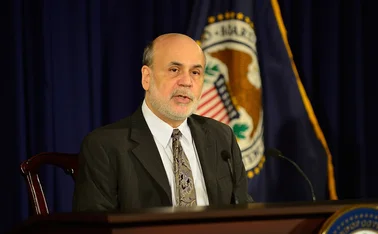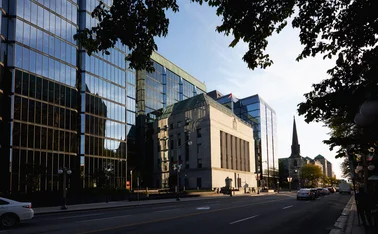
Economics in central banking: José Vicente Romero and Sara Naranjo-Saldarriaga, Central Bank of Colombia
The economists have developed a framework to help monetary policy-makers deal with on-going climate shocks

Climate change is an urgent problem and one central bankers have been working on for some time. Leading modelling approaches, pioneered by the Network of Central Banks and Supervisors for Greening the Financial System, involve the use of scenario analysis to understand the complex, long-term and uncertain impact of the changing climate and the policies implemented to deal with it. A growing body of research explores how the physical impact of climate change will buffet economies and how the longer-term process of adaptation to climate change will reshape them.
The problem for central banks, however, is that they need to set policy now, and many, including the Central Bank of Colombia, are already seeing the effects of climate change. “When you try to use the existing literature for the day-to-day operations of a central bank, it’s tough,” says José Vicente Romero, who works in the applied modelling team at the central bank. Research on physical risks tends to be very detailed, such as how particular crops will be affected by changing weather. Research on transition risk takes a much broader scope, looking at policy adaptation over periods of several decades.
Monetary policy-makers rely on models that fall in between these extremes. They deal with horizons of a few years, not a few decades, and generally with higher levels of aggregation than data on individual crop yields.
Romero and his colleague, Sara Naranjo-Saldarriaga, achieved a breakthrough by thinking about climate change from the perspective of an applied modeller. “All our work is focused on what can be implemented in the future in the forecast section, or used to answer questions the board has,” says Naranjo-Saldarriaga.
Their starting point was the semi-structural model – a small, open-economy New Keynesian model that is the most popular choice of key forecast model among central banks worldwide. Because semi-structural models are not fully micro-founded, they trade some theoretical rigour for greater flexibility and often a better fit to the data.
Specifically, the researchers’ paper, Weather shocks and inflation expectations in semi-structural models, outlines a way for these models to capture the key mechanisms at play when an economy is hit by weather caused by the El Niño Southern Oscillation (Enso). In doing so, the paper – published in October 2023 in the Latin American Journal of Central Banking – also sheds light on another topic that is at the forefront of current macroeconomics: the formation of inflation expectations.
Enso is the oscillation that occurs between abnormal warming of the ocean surface (El Niño) and abnormal cooling (La Niña). The change alters patterns of wind and rainfall, often triggering extremes of weather, with storms in some parts of the world and long periods of drought in others. Either can be disastrous for farmers.
The challenge is that this is only one of many problems. “In emerging markets, when we have a bad realisation of shocks, everything that is bad goes bad at the same time,” says Romero. “In Colombia in 2016, we had a really strong El Niño effect, but we also had transportation strikes, oil prices were going down, the exchange rate was going up … Understanding all these shocks is really hard for the policy-maker.”
In their paper, Romero and Naranjo-Saldarriaga use the oscillation of the Enso phenomenon to disentangle the shocks. An index is available on the current state of Enso, which they incorporate as an exogenous shock in a Bayesian vector autoregression. The BVARx model shows weather shocks push up inflation expectations in both the short and long run.
They use this result to build out the semi-structural model. In the model, weather can affect the marginal costs of regulated goods and food prices in Phillips curves and inflation expectations. They also model the credibility of the monetary authority.
The model highlights a non-linearity in how weather shocks ripple through the economy. The immediate shock pushes up inflation expectations. If the central bank is fully credible, expectations will readjust as the shock fades, in line with rational expectations. But if the central bank is not fully credible, the model reveals a second-round effect – people come to expect higher inflation, and the central bank must work harder to return inflation to target. The result suggests policy-makers should intervene early to correct for weather shocks, or risk an uphill battle in future.
Romero and Naranjo-Saldarriaga are now working on a fully structural version of the model, though Romero notes this comes with “a lot of complications”. As well as being harder to build than semi-structural models, structural models rely on loss or damage functions, which are controversial among climate scientists. Some argue it is hard to estimate damage accurately, especially based on a past in which climate change was less destructive. Aggregate damage functions also obscure the uneven impact of weather shocks.
The semi-structural model sidesteps these issues. Naranjo-Saldarriaga adds that she sees value in a more data-driven approach, using her background in data science. This could be another path forward for future research.
Romero and Naranjo-Saldarriaga are modest about stating their approach is novel, saying only that it has not been tried before in Colombia. But there are certainly few studies to date that have built a practical framework to help policy-makers cope with steadily worsening weather shocks. “We’re really happy that we’ve been able to use these macro models to answer questions that the models are not normally used for,” Naranjo-Saldarriaga says.
The Central Banking Awards 2024 were written by Christopher Jeffery, Daniel Hinge, Dan Hardie, Joasia Popowicz, Ben Margulies, Riley Steward, Jimmy Choi and Blake Evans-Pritchard.
Only users who have a paid subscription or are part of a corporate subscription are able to print or copy content.
To access these options, along with all other subscription benefits, please contact info@centralbanking.com or view our subscription options here: http://subscriptions.centralbanking.com/subscribe
You are currently unable to print this content. Please contact info@centralbanking.com to find out more.
You are currently unable to copy this content. Please contact info@centralbanking.com to find out more.
Copyright Infopro Digital Limited. All rights reserved.
You may share this content using our article tools. Printing this content is for the sole use of the Authorised User (named subscriber), as outlined in our terms and conditions - https://www.infopro-insight.com/terms-conditions/insight-subscriptions/
If you would like to purchase additional rights please email info@centralbanking.com
Copyright Infopro Digital Limited. All rights reserved.
You may share this content using our article tools. Copying this content is for the sole use of the Authorised User (named subscriber), as outlined in our terms and conditions - https://www.infopro-insight.com/terms-conditions/insight-subscriptions/
If you would like to purchase additional rights please email info@centralbanking.com
Most read
- ECB says iPhone is currently incompatible with digital euro
- Supervisors grapple with the smaller bank dilemma
- ‘Do I die, or do I survive?’ Officials reflect on Basel III complexity







